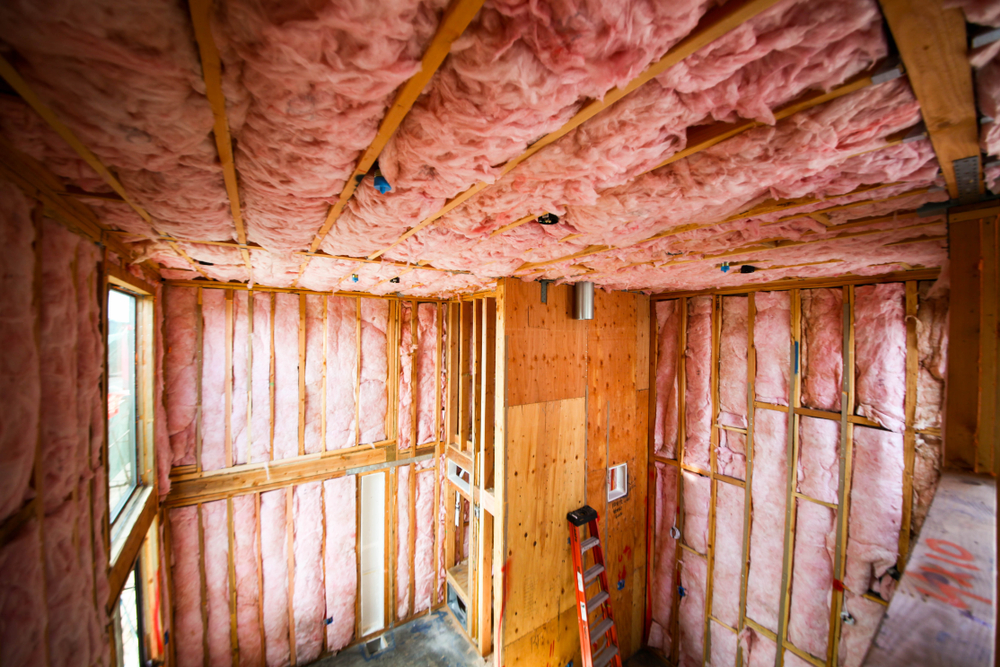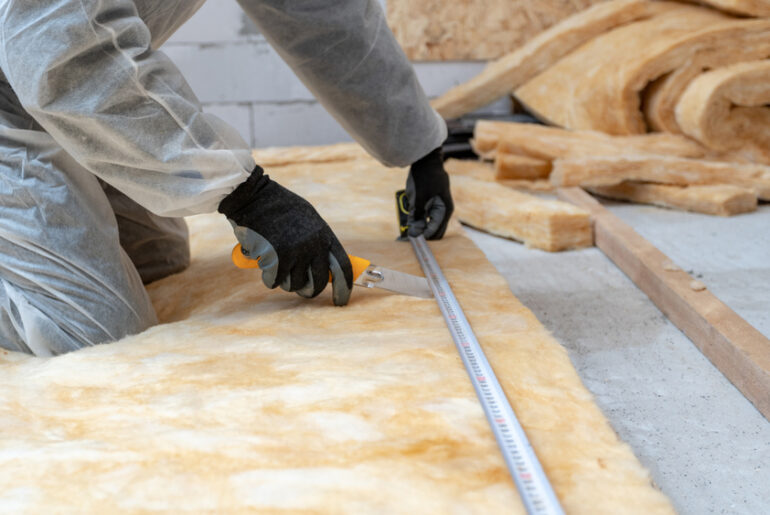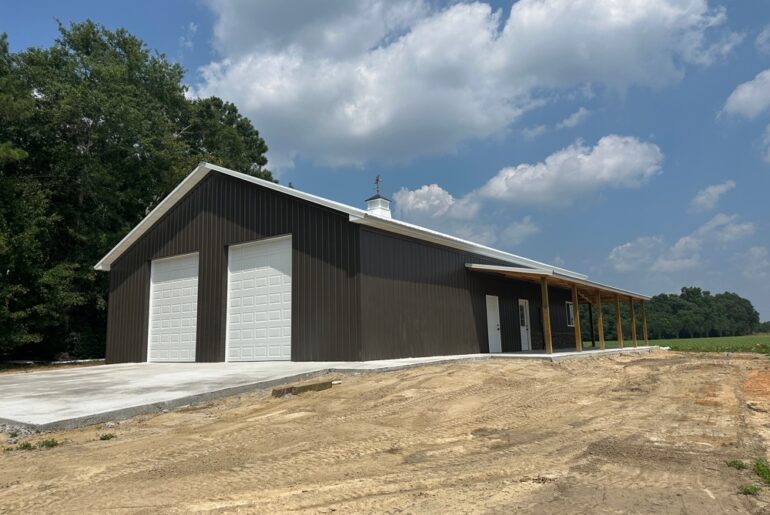Insulation regulates the flow of heat through a home’s walls and ceiling. The house stays cool in the summer and warm in the winter by slowing the rate at which heat flows through the walls. In addition to climate control, insulation also reduces noise and prevents moisture from getting in — especially in humid or rainy regions.
But when it comes to picking the right installation, many homeowners have questions like whether they should choose faced or unfaced fiberglass insulation. It’s important to know the differences and where each is best suited so you can make the most efficient choice for your home.
What Is The Difference Between Faced And Unfaced Fiberglass?
While both faced and unfaced can be a suitable insulation choice, their differences determine the best locations for each.
Faced Insulation
Faced fiberglass insulation has a material layer on one side of the fiberglass that acts as a barrier. The barrier prevents moisture and vapors from entering the home, protecting it from mildew and mold.
If the air outside the home is warmer than inside, the warm air will form water droplets or condensation on the cooler surfaces within the house. Moisture can end up collecting on your walls, leading to mold. The barrier on faced insulation is the answer to this problem.
The vapor barrier can be made of various materials, including kraft paper, aluminum foil, vinyl, or gypsum board. The most common facing found in residential homes is kraft paper. However, foil facing can prevent moisture and movement of radiative heat, making it a popular choice in very sunny areas of the country.
Commercial buildings often use vinyl facing or gypsum board facing. Both prevent moisture penetration. Vinyl is especially durable, which is why it is also often used in industrial settings.
Unfaced Insulation
While unfaced insulation is made of the same material as faced fiberglass insulation, it does not have the vapor barrier attached. It can be more affordable than faced insulation as well as have a better R-value.
Unfaced insulation can be used to reduce noise and prevent pollutants from entering the home. It can also help your home be more energy efficient due to the good R-value.
Advantages of Faced Fiberglass Insulation
It’s easier to install. For those hoping to add insulation by themselves, face is a good choice because it is easier to DIY. The vapor barrier helps to hold the fiberglass together, allowing you to move it, unroll it, and staple it — you won’t have to worry it will fall apart. Unfaced insulation isn’t as strong, and it can more easily tear while you are trying to install it. Plus, it doesn’t work well with staples.
It blocks moisture. The vapor barrier on faced insulation is made to stop moisture from soaking into your insulation, walls, and ceiling. Homeowners in humid locales and coastal areas often choose faced fiberglass insulation for this reason alone.
Advantages of Unfaced Fiberglass Insulation
It’s non-combustible. Unfaced insulation is considered a fireproof material which means it can reduce the chance of flames spreading between interior and exterior walls. It has been found to prevent the spread of flames altogether on some occasions. Fiberglass, however, is not entirely fireproof and can release toxic fumes upon burning.
It’s cheaper. While it is minor, there is still a cost difference between faced and unfaced fiberglass insulation. Even a slight price difference can be a deciding factor when your budget is tight. Faced insulation may cost .25 to .50 cents more per square foot than unfaced insulation. While that won’t make much difference if you are only insulating a small area, if you are insulating a large commercial building, the price difference can be a mitigating factor.
When to Use Faced Fiberglass Insulation?
Everything has a place, and faced fiberglass insulation is no exception.
Exteriors
It is common for exterior walls and attic ceilings to be insulated with faced as the vapor barrier is needed to keep water from getting into the home.
Pro tip: If insulation is being stacked, it is crucial that the facing not be placed in the middle as it can cause moisture to build up inside the stack of fiberglass insulation which can lead to mold formation.
Cathedral Ceilings
In rooms where the downward flow of heat needs to be prevented, like those with cathedral ceilings, faced insulation is typically used.
Metal Buildings
Buildings that are made of metal, such as commercial or industrial spaces, typically use vinyl-faced insulation.
Garage Doors
A lot of cold air can seep in through a garage door, making its way into the rest of the home. To control the changes in temperature, faced fiberglass is often used to insulate the garage door. It also has the bonus of adding a little soundproofing to a noisy door. If the door is metal or steel, vinyl-faced fiberglass insulation is the best choice to control moisture.
Attic Floors
Adding faced fiberglass insulation to the attic floor is a good idea to keep cold and hot air from permeating the home. The vapor barrier should be facing down towards the drywall of the ceiling to prevent moisture. The insulation will also act as soundproofing.
Floor Joists
The space between the floor joists should be filled with faced insulation. If the space is left hollow — especially on the first floor — there can be problems with moisture, mold, and pest infestations. Empty space can also lead to higher utility bills.
Crawl Space
Faced fiberglass insulation can also be used in a crawl space that lacks proper ventilation. The facing should be placed upwards, toward the house.
When to Use Unfaced Fiberglass?
There are times when unfaced fiberglass insulation is the better option.
Adding New Insulation
When you are adding some new insulation over old, unfaced is the better choice to prevent moisture from getting trapped. The unfaced insulation will reduce the risk of fire and help improve heat retention as well.
New Construction
Contractors will often use unfaced insulation in new construction because of the increased R-value and the ability to stack it without having to worry about leaving a vapor barrier in the middle of the stacks.
Interior Walls
For any interior walls (ones that don’t touch the outside), unfaced construction is a good choice. There is less worry about moisture seeping in because the temperature should be more stable.
“Dry” Rooms
Rooms in the home where moisture isn’t generally an issue, such as the living room or a study, don’t need to worry about vapor barriers like, say, a bathroom would. Unfaced fiberglass insulation is a good fit for these “dry” rooms.
Is Faced Fiberglass Insulation Better than Unfaced?
One is not necessarily “better” than the other. Both faced and unfaced can help make your home more energy efficient and reduce noise. It’s more a question of which is better for your home.
There are a few factors that will help you decide which one you need: your home’s size, your locale, and whether there is existing insulation in place.
Suppose you do not have any insulation in your crawl space, ceilings, and exterior walls. In that case, you should install faced fiberglass insulation in those areas.
If you live in a climate with extreme temperature shifts, you will need insulation with the best R-value, which may make unfaced insulation a better choice.
If you already have insulation in your home and you simply want to install more, unfaced insulation should be used. Adding faced insulation to the stack could lead to moisture issues if the barrier falls between the fiberglass of two separate sheets of insulation.





